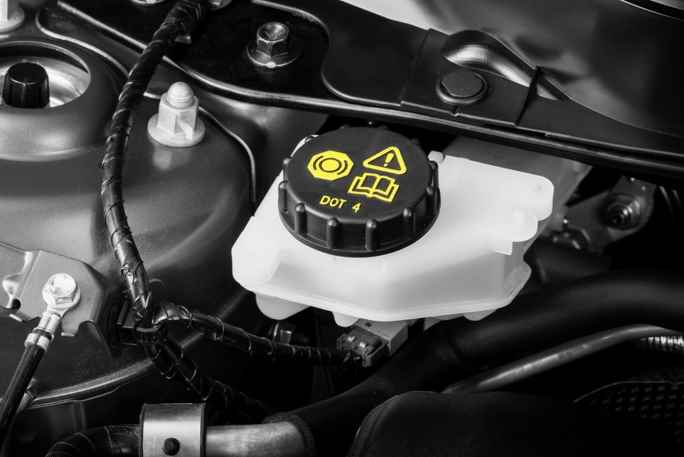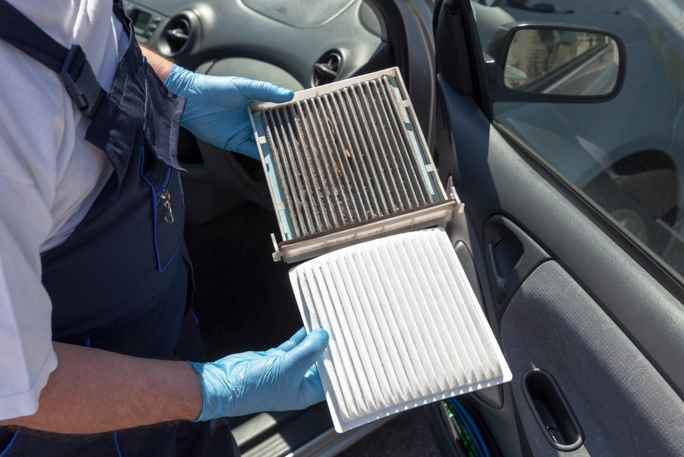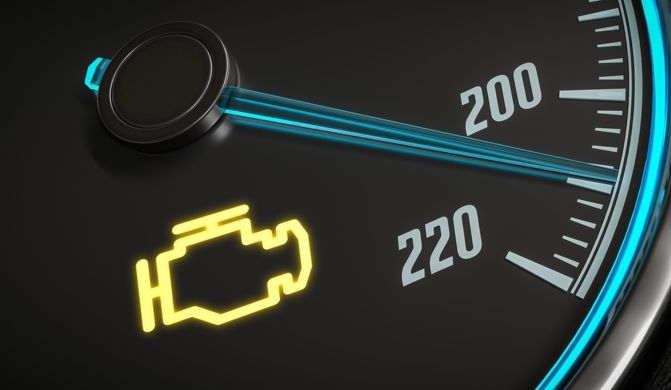Limp Mode is a safety feature of a vehicle.
If the engine control module receives incorrect data on a vehicle part that could damage the engine or transmission, the ECM (Engine Control Module) activates limp mode.
Limp mode usually limits engine speed and reduces power.
I have discussed reasons and solutions related to Limp Mode in this article.
Meaning of Allison Transmission Limp Mode

The Allison transmission “limp mode” is a safety feature of vehicles with Allison transmissions.
In this mode, your vehicle automatically shifts into third gear and locks itself.
The limp mode is triggered if your transmission system gets badly damaged by severe engine overheating, towing excessive load, or anything else.
What Causes the Limp Mode of Allison Transmission?

At present, almost all vehicle operating parts are controlled by computers.
These include sensitivity, transmission line pressure, shifting timing, etc.
Speed sensors monitor fuel mixture, transmission operations, ABS, and fuel injection, sending actual data to the ECM.
The TPS (throttle position sensor) and MAP (manifold absolute pressure) sensor send engine load information to ECM.
A vehicle’s ECM determines information and operates it.
If the ECM notices anything wrong, the limp mode is activated itself.
There are 07 reasons which cause Allison transmission’s Limp Mode.
- Transmission errors (for example, being unable to change gears properly).
- Boost control issues.
- Brake malfunctions (for example, the hydraulic leak in the brake system).
- Engine issues (for example- turbo problems or engine misfiring).
- Sensor malfunction
- Oil levels or coolant levels are deficient
- Wiring issues.
What Happens When Allison Transmission Goes into Limp Mode?
The limp mode is triggered if the computer finds anything wrong with the transmission.
After the Allison transmission goes into limp mode, you may experience the following 06 symptoms:
- Related functions like air conditioning and heating may stop operating.
- Check engine warning light illuminates.
- The maximum RPM will be limited (approximately 2,000 to 3,000 RPM).
- Allison locked into a low gear, usually the 3rd gear, but it depended on the model.
- Reduced performance
- The vehicle’s speed will be limited to 35-55 mph.
What to Do If Limp Mode is Activated?
A limp mode is triggered if there is a problem in the transmission system.
If the limp mode is activated, follow these 03 suggestions.
- Limp mode restricts further damage to the transmission, so don’t worry if it appears.
- Take the vehicle to your garage or a service center.
- In my experience as a mechanic, I recommend you avoid driving your car continuously in the limp mode because it will cause more damage to your car.
You need to fix the problem ASAP.
How to Get Allison Transmission Out of Limp Mode [02 Methods]
2 easy methods to fix the Allison transmission limp mode include simple solutions and advanced diagnosis system. At first, you need to determine what causes the limp mode to troubleshoot it.
Here are 02 methods to reset Allison Transmission limp mode:
Method 01: Simple DIY Solution
Follow these 04 steps below to fix the limp mode:
Step 01: Switch Engine Off and Restart
Switch the engine off and wait for 5 to 6 minutes.
Then restart your vehicle engine.
Sometimes, this simple trick works, and your vehicle gets out of limp mode.
Step 02: Check Fluid Levels

Check all fluid levels in your vehicle.
Proper fluid levels increase your vehicle’s lifespan and performance.
Coolant, transmission, power steering, brake, and engine fluids, are included in the checking.
If any of them are low, it may cause engine overheating or excessive wear.
Also, check the color of all fluids.
If the fluid gets dirty, its color will change.
Also, if you do not change the fluid for long periods of time, it is time to change the fluids.
Step 03: Replace Air Filter

An air filter provides fresh air to your engine.
Air filters prevent dust or dirt from getting inside the engine.
When your air filter hasn’t been replaced for a long time, it may become clogged and cause problems with intake air.
Check your air filter regularly.
If it is covered with dust or filthy, replace it.
An air filter should be replaced every 15,000 to 25,000 miles for normal conditions and every 10,000 miles if you drive in extreme conditions.
Step 04: Clean MAF Sensor

The Mass Air Flow (MAF) sensor is essential for a vehicle engine.
It controls the air-fuel mixture in the internal combustion engine.
The MAF sensor becomes dirty quickly if you have an open-air filter.
A dirty MAS sensor may send incorrect data to the ECU (Electric Control Unit).
Ultimately, it results in a limp mode.
If the MAF sensor is dirty, remove it carefully and clean it with an appropriate cleaner.
The wires inside the MAF sensor are subtle, so be careful while removing the sensor, and don’t touch the cables with your hand directly.
Typically, a MAF sensor works properly between 100,000 to 150,000 miles; you should replace it after this period.
Method 02: Advanced Diagnosis

If no result comes out after applying method 01, it is time to go for method 02- advanced mode.
Advanced diagnosis is a bit complicated, and you will need several tools.
You need to identify the cause correctly.
To do this, you need an OBD2 scanner.
In addition to saving you money, it prevents you from wasting money on just the process of checking.
The OBD2 scanner shows vehicle error codes.
Follow these 11 steps:
- Check the error codes with the OBD2 scanner.
- If the limp mode is triggered, an error code must be available on the ECM.
- If no trouble codes are found, you need another troubleshooting scanner.
- Find the error code and google it for further information about the code and solutions.
- Test the wastegate by using a vacuum gauge.
- Test the boost control sensor while checking the wastegate by pressurizing the wastegate and ensuring that the wastegate moves freely.
- If there is any fault in the wastegate or sensor, replace them.
- Test the boost pressure sensor; replace it if it is faulty or damaged.
- Test the intake leaks. You can use an EVAP smoke machine for this process. If there are any leaks, repair them or replace the PCV valve for a better diagnosis.
- Test the MAF sensor data, engine coolant, O2 sensors, temperature sensor, and throttle position sensor too.
- If you find any faulty parts, replacing them is the right solution.
Consult a mechanic if you have any problems performing the above test.
Watch the video to learn more about limp mode:
Allison Transmission Common Problems
Overheating, gear slipping, noise and vibration, shifting delay and rough shifting are the five common problems with Allison transmission.
Noise and vibration: Noise and vibration are the most common problems with any transmission. Any transmission can get noisy and vibrate intensely if not maintained properly. Old and worn-out transmission oils are the main reason for noise and vibration in the Allison transmission. Sometimes it can be because of long time usage without any maintenance. Dirty and low levels of oils contain debris which hampers the smooth operation and produces noise.
Rough shift: Rough shifting in Allison transmission happens because of thick and dirty transmission oil, worn out gears etc. This problem greatly reduces user satisfaction and causes safety issues. You should diagnose the vehicle immediately as these issues can turn into a major one with delayed maintenance.
Overheating: Overheating is a big problem for any mechanical parts. Overheating issues in an Allison transmission occur due to tightened gears, bad transmission oil, cooler malfunction etc. You shouldn’t take this issue lightly as it can damage the important parts and cost you a lot of money.
Gear slipping: You may experience gear slipping in your Allison transmission. Transmission can slip from one gear to another intermittently. It is because of loose parts, low lubricants, dirty oil, wear and tear in gears etc. It is an indication of a possible future major issue of your transmission.
Delayed shifting: Driving experience is greatly troubled by shifting delays. It is also a safety issue as good driving requires accuracy in vehicle control. Delayed shifting can cause panic and accidents. Worn-out gears, clutch issues and torque converter failure are the main reasons for the issue.
Can I Drive in Allison Transmission Limp Mode?
It is not recommended.
But you can drive in limp mode to take your vehicle to a repair shop.
Continuous driving in limp mode causes further damage to your vehicle.
You can tow your vehicle to a repair shop; it is the safest way.
FAQs
How Do I Reset My Allison Duramax Transmission?
Follow the steps to reset Allison Duramax Transmission:
- Turn the key on and start the vehicle
- Don’t start the engine
- Fast press the brake in N-D-N-D-N-R-N mode.
Your Allison transmission will be reset.
How Do I Get My Transmission Out of Safe Mode?
If your vehicle’s safe mode is activated, there is something wrong with the transmission.
The first step to getting out of the safe mode is identifying the cause.
It can be caused by various problems, like transmission malfunction, low oil level, sensor problems, booster malfunction, or wiring issues.
You should follow the steps to get the transmission out of safe mode-
- Identify the problem by using a scanner (OBD2).
- Identify the specific faulty part.
- Try to repair or replace the defective part yourself (if possible).
- Consult with a mechanic to get out of safe mode.
How Fast Can I Drive in Limp Mode?
Driving in limp mode is not a smart idea.
But if you take the vehicle to a repair shop, you can drive for a short time.
In this case, your driving speed will be limited.
Usually, the speed is between 35 to 55 mph, and the RPM is between 2,000 to 3,000 RPM depending on the model and year.
What are the Methods of Allison Transmission Limp Mode Reset?
Typically there are 2 methods to reset Allison Transmission limp mode.
The first one is by diagnosing with a scan tool.
And the second method is restarting the engine, replacing the air filter, and cleaning the MAF sensor.
Any of these 02 methods will get your transmission out of safe mode.
Can limp mode damage the engine?
Limp mode is a safety system in your vehicle. Your driving speed and performance are greatly reduced in this mode. Driving in limp mode can overheat the engine and transmission. It can damage the engine and transmission as the limp mode is designed to force you to maintain your vehicle on time.
Final Words
Limp mode indicates transmission problems.
Just resetting it eliminates the problem for the short term, but it needs proper diagnosis to avoid more issues.
With an advanced diagnosis, the limp mode will be removed long-term, and transmission will remain healthy.
Read more about Allison transmission problems in the following articles:

